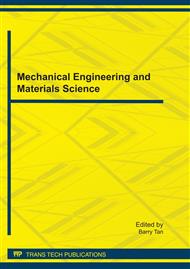p.212
p.217
p.224
p.230
p.238
p.244
p.251
p.257
p.262
Preparation and Properties of Nanocomposite of Poly(L-Lactide) and Surface Grafted Hydroxyapatite
Abstract:
nanocomposites of poly (L-lactide) (PLLA) and hydroxyapatite (HAP) or surface grafted hydroxyapatite (g-HAP) were prepared by ultrafines hot-pressing method, and the properties were investigated by polarized optical microscopy (POM), scanning electron microscopy (SEM), mechanical test and cell culture. Results showed that the PLLA segment grafted onto the HAP surface played a positive role on improving the interfacial compatibility between the g-HAP and the PLLA matrix. Compared with the HAP/PLLA composites, the bending strength and bending modulus of the g-HAP/PLLA composites were obviously enhanced, which was proportional to the nHAP:nL-LA ratio. The result of POM showed that the g-HAP particles acted as an effective heterogeneous nucleating agent in the g-HAP/PLLA composite. Fibroblasts culture indicated that the g-HAP/PLLA composites had better cytocompatibility than PLLA and HAP/PLLA composites. Hence, g-HAP/PLLA composites will be a promising material for bone tissue engineering.
Info:
Periodical:
Pages:
238-243
Citation:
Online since:
October 2011
Authors:
Keywords:
Price:
Сopyright:
© 2012 Trans Tech Publications Ltd. All Rights Reserved
Share:
Citation:


